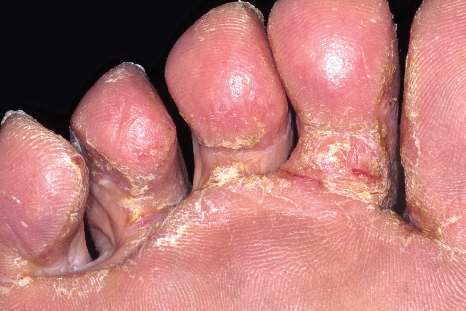
Athlete's foot is a contagious condition caused by a fungus called Tinea pedis. It flourishes in the warm, moist environment between the toes and is passed from person to person on small pieces of skin shed from the feet as the sufferer walks around barefoot. It is often picked up from damp changing rooms and swimming pool floors.
What are the symptoms?
Symptoms usually start between the fourth and fifth toes. The skin appears red and itchy at first, later becoming white, inflamed and weepy. It may also crack and peel.
Athlete's foot is not in itself a serious infection, but if it is left untreated, it may spread to other areas of the foot and to the toenails. If the toenails are affected, they may become discoloured, thick and brittle.
What are the treatment options?
Feet should be washed daily with soap and dried thoroughly. An antifungal treatment can then be applied. There are two types available OTC €“ fungistatic and fungicidal treatments. Miconazole, clotrimazole, bifonazole, tolnaftate, griseofulvin and undecenoates are fungistatics, which slow down the rate at which the fungus grows. They should be applied two to three times a day for two to four weeks. With bifonazole and griseofulvin, treatment is once daily. Remind customers to continue treatment for a couple of weeks after the infection has cleared to stop it from returning. Examples: Canesten Bifonazole Once Daily Cream, Grisol 1% Spray Solution, Daktarin, Mycil.
Some products also contain hydrocortisone, which treats inflammation as well. Example: Daktacort HC.
The only fungicidal treatment available OTC is terbinafine. Terbinafine kills the athlete's foot fungus and is usually applied once or twice a day for a week. Examples: Lamisil AT 1% Gel, Scholl Advance Athlete's Foot Cream.
Reflection point
A customer has athlete's foot:
- What product would you recommend?
- How should the customer use the product and what other measures will help to manage the condition?
